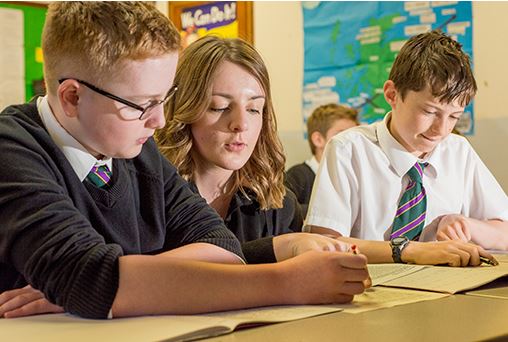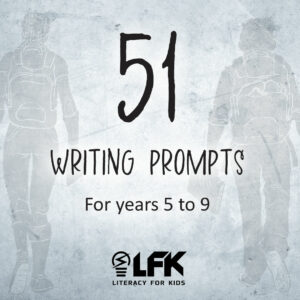6 Sure Fire Strategies to Make Writing Fun

Welcome back to the school year! Student engagement is key at the beginning of the year – it helps to set the tone. As you start with your class, how can you engage those reluctant writers (or any student who has a challenge with getting their ideas onto paper)? There are some ideas that you can get up and running immediately to boost engagement and get those desired outcomes and entice students to write.
1) Draw on Their Interests
Two words: a survey. It’s the beginning of the year so now is a good time. The key to engaging a reluctant writer is to figure out their interests. You don’t need complicated surveys to print off. Let’s make it simple and quick! Write 3 questions on the board and give each student an index card to write their answers. Examples include: 1) Name a topic that interests you. 2) What is the latest music/movie/book or Netflix series that you’ve enjoyed? 3)
2) Create a Writing Centre
Let’s chat about writing centres. Do you use them? If so, do you find them to be effective? How do you keep your students engaged? And how do you keep it organised and tidy?
Writing centres are such a powerful way to provide students with authentic and engaging writing experiences while also practicing important skills. Some teachers allow student access only during writing time. Include fun materials and novelty items such as: scented pens, crazy scissors, reference materials, mechanical pencils, special paper/card/stencils. This builds excitement about writing. You may consider ‘opening’ and ‘closing’ this area during writing periods.
Click here for some Fantastic Writing Centre Ideas.

3) Start Writing With Your Students
Try getting alongside your students and writing at the same time they do during the literacy block. This shows them that you are a writer too. You give the message that you value the art of writing and can model the behaviour of what a writer ‘does’. There will be times that students write in groups or pairs, but writing independently can be a powerful message to show students that their teacher writes too.
4) Make Transition Time to Writing Special
Teachers use a variety of ways to transition between lessons. It might be a timer, music, countdown clocks, chimes, or a catchphrase. Our suggestion is to make the transition to writing time a standout. Try to find one thing that makes writing time different.
5) Include Opportunities for Share Time
Throughout the day students will share their maths answers, a science concept or group findings in a subject area. However, what makes sharing a student’s writing special is that it is unique and specific ~ even if the writing topic is the same, responses and experiences will vary from student to student. This technique can be great as a writing windup activity but also a way to introduce a writing task by sharing a student’s writing from the previous lesson.
6) Partner Writing or Writing Buddies
Writing buddies is a great concept and a good chance to take writing out of your classroom i.e. partnering with a buddy from another grade level. This can be very beneficial if your students are the older ones as they can become the writing ‘expert’. Fifteen or twenty minutes is ample time for this, especially for those younger students. Finding time for this can be tricky but even once a month is valuable. Another alternative is to partner with a buddy from another class i.e. two Year 5 classes together.
7) Collaboration
Collaboration offers parallel support for reluctant or weaker writers. This technique:
- Eases anxiety of not having lots of ideas to jot down (while others in the class may be writing a lot!)
- Encourages students to think more deeply when in a group
- Sharing of ideas without having to write them down
- Great for social interaction
8) Vocab Tiles/Language Builders/Word Bank Cards
Use a catchy title to help students retain key vocab words. It can be a struggle to make vocab stick for some learners. You might like to write words on large paddle pop sticks, flashcards, a topic outline eg spaceship outline if you’re writing about Space. Reluctant writers can incorporate these into their writing.
Feel free to send us your writing ideas to info@litearcyforboys.com.au or info@literacyforkids.com.au We love hearing from teachers and parents!
Want your students to finish strong in their literacy? Want more from your literacy program? Contact us for a 30-day free trial in your school or classroom. New schools receive this terrific Teaching Resource: 51 Writing Prompts. These were a complete hit with our schools last year and you will not be disappointed with these image-rich, kid-centred Writing Prompts.




Check out our blogs for more ideas and tips.
Identify Comprehension Gaps with these great cards
Steps to Successfully Support Disengaged Learners
See us featured in The Educator Australia magazine
Research confirms that early reading boosts literacy
Boys Love LFB – Here’s what they have to say!
Get boys reading in the digital age
Why write? Tips for reluctant writers
Brought to you by Tanya Grambower

